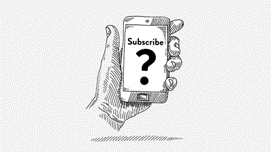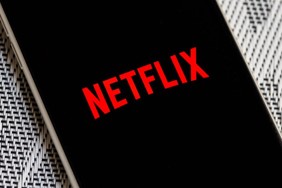A subscription economy has been hogging the limelight lately. The subscription economy means that consumers can use the services or products they want by paying a certain amount for a certain period of time instead of buying it outright. The subscribed economy is not a new concept. You have already received regular delivery of magazines, paper newspapers, and dairy products. In the past, the subscription economy was limited to periodic publication and consumer goods. However, recently it has expanded to a wide range of content services such as Netflix and YouTube Premium, food, cosmetics, and even flowers, drawing keen attention from consumers. In fact, according to KT Economic Management Research Institute, the size of the domestic subscribed economic market increased 54.8% from 25.9 trillion won in 2016 to 40.1 trillion won in 2020. Let's take a closer look at the background of the growth, various services, and the problems of the subscription economy
Background of Growing Subscription Economy

Personalized Curation Services
The reason why the subscription economy is loved by many consumers is because it provides personalized services. Businesses based on subscription economy services are very important to analyze customer demand and provide customized items to their needs. Consequentially, the subscription economy services are developing in such a way that they collect a large amount of data to understand customers' tastes in detail and are able to recommend new items that are similar to customers' preferences. From a customer's perspective, the subscription economy is very attractive because it identifies their needs and regularly provides what they want, and also introduces products that they didn't know about. Companies can secure a major customer base to predict demand and provide more sophisticated services, thereby ensuring stable sales. According to Seo Yong-gu, a professor of business administration at Sookmyung Women's University, "The subscription economy is effective for distribution companies that make stable profits and increase customer loyalty through pre-payment. It is evolving by analyzing the timing and propensity of purchase based on the customer's database." This personalized subscription service is a win-win method that benefits both from the perspective of individuals and companies and is one of the backgrounds behind the growth of the subscription economy.
Spread of Non-Face-to-Face Consumption Culture Due to COVID-19
Since the outbreak of COVID-19, the culture of non-face-to-face consumption has spread, minimizing human contact. According to the 'Change and Implications of Online Consumption Behavior by Generation' report released on August 4th, based on Hana Card's online payment data, the amount of Over The Top [1](OTT) service payments more than doubled compared to the same period last year. According to the "Online Shopping Trends" released by the National Statistical Office on August 4th, online shopping transactions in the second quarter rose 25.1 percent year-on-year to 46.8885 trillion won. Instead of visiting movie theaters, people prefer to watch content on streaming platforms such as YouTube and Netflix, which they can enjoy at home. They also do more online shopping than direct shopping. Due to the spread of non-face-to-face consumption culture caused by COVID-19, more and more companies are introducing subscribed economic services. As a result, the subscription economy has become a consumption trend for society as a whole.
Various Kinds of Subscription Economy Services

As the subscription economy has become a social trend, companies in various fields are attempting to jump on the bandwagon and provide subscription services of their own. The growth of subscription services in the food and beverage industry, which are consumed a lot in daily life, is remarkable. Lotte Confectionery launched the first snack subscription service in 2020. At the time of the introduction of the "Monthly Snacks" service, it started with a limited edition of 200. However, it became popular because consumers can receive randomly selected snacks by Lotte Confectionery on a regular basis every month, so the limited edition has been changed to regular operation. Consumers can also enjoy subscription services on cosmetics. Startup "Tone 28" is a company that provides customized cosmetics services. The cosmetic experts directly analyze customers' skin conditions and deliver products tailored to their individual skin conditions every 28 days. “Kkukka,” which launched its first service to deliver flowers regularly, is also drawing attention. "Kkukka" surpassed 1 billion won in monthly sales in May 2020, which is noteworthy that flower subscription services have grown significantly in Korea, where flower purchases are traditionally smaller than in the U.S. and Europe. The apparel sector also joined the subscription services. CJ ENM's lifestyle shopping mall "Funshop" provides a sock subscription service. Reflecting consumers' demand that various kinds of daily socks are needed, they deliver newly designed socks every month for a three-month or six-month delivery period to customers who apply for subscription services.
The Problem of Subscription Economy

The subscription economy has the great merit of ensuring that consumers can receive the various types of services they want on a regular basis, and that companies can reliably secure loyal customers. However, there are also obvious problems with the subscription economy. The major problem is the unfair trade issue. This happens when companies do Dark Nudge marketing. In particular, these problems are concentrated in OTT platform services such as Netflix and YouTube Premium and music streaming services such as Melon Music and Genie Music. This phenomenon occurs when service users are allowed to experience the service for free for a month and then are automatically moved on to payment system the following month. Conflicts between businesses and consumers related to service cancellation and refunds continue to arise due to a system that does not provide consumers with easy to access information on subscriptions and terminations and implicit payments next month.
The subscription economy is now the mainstream business model. Personalized service recommendations are a very attractive factor to draw consumers' attention, and the spread of non-face-to-face consumption culture due to COVID-19 further boosted the growth of the subscription economy. People can subscribe regularly to a variety of media services as well as daily consumer goods. Subscription economy services have made it easier for consumers to live more convenient and prosperous lives, and for companies to secure loyalty customers. However, a solution is also needed to minimize problems that arise because companies have not explicitly notified consumers of subscription and termination information. As technology advances, more diverse subscription services will emerge and consumers will have more choices and convenience. Let’s keep our eyes on the subscription economy in the future.
[1] A service that provides various media contents such as broadcasting programs, movies, education, etc. through the Internet

